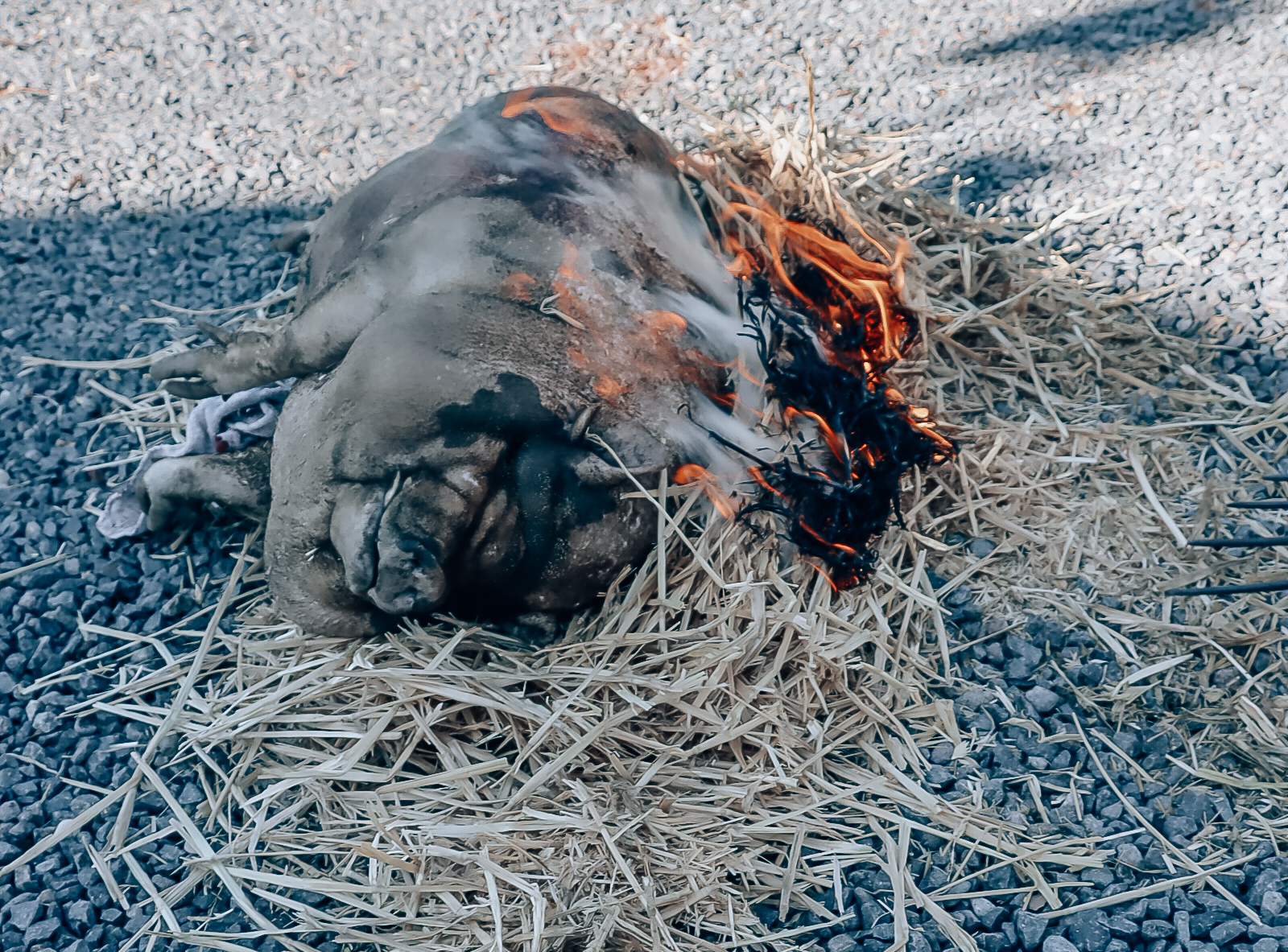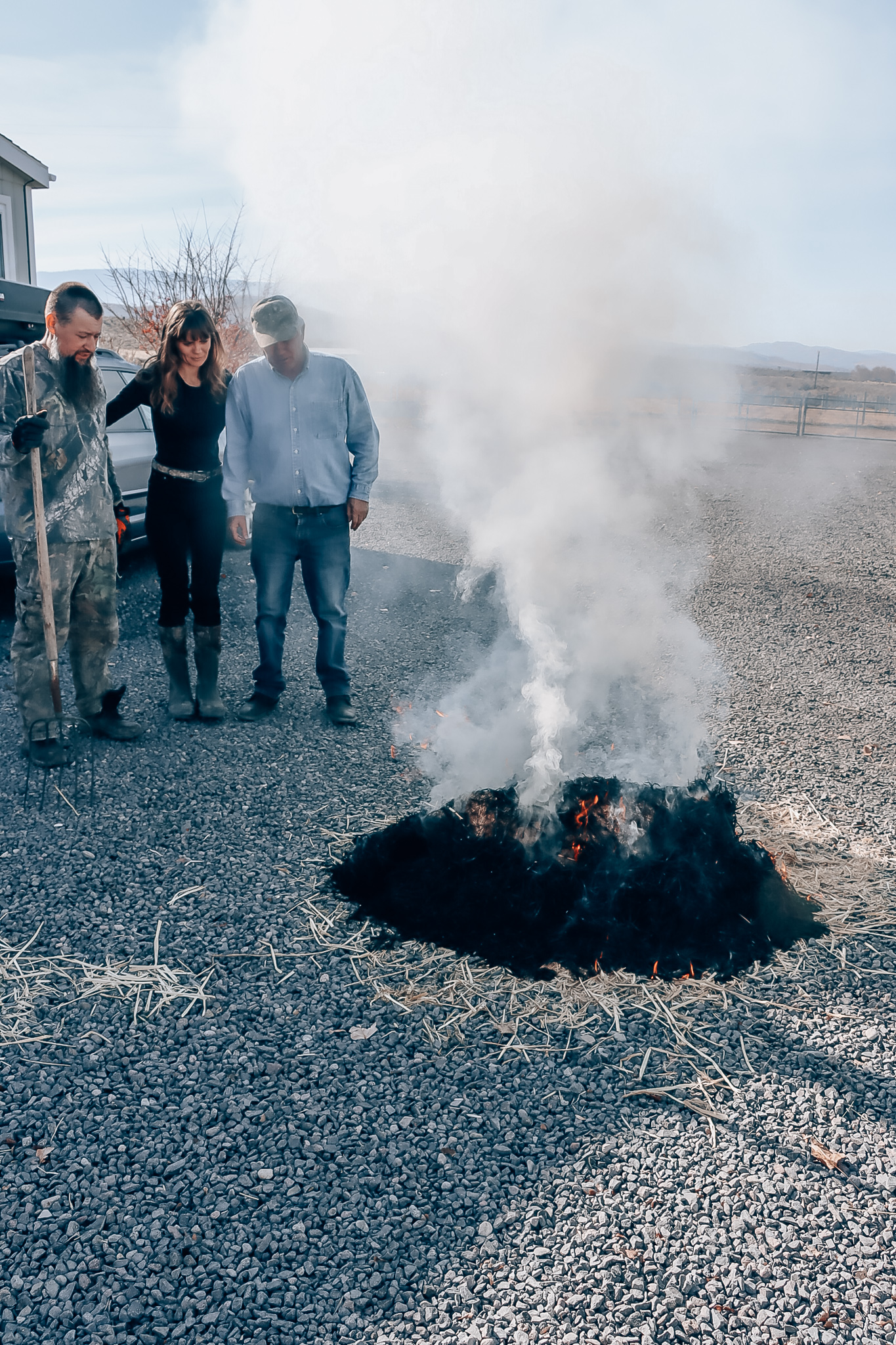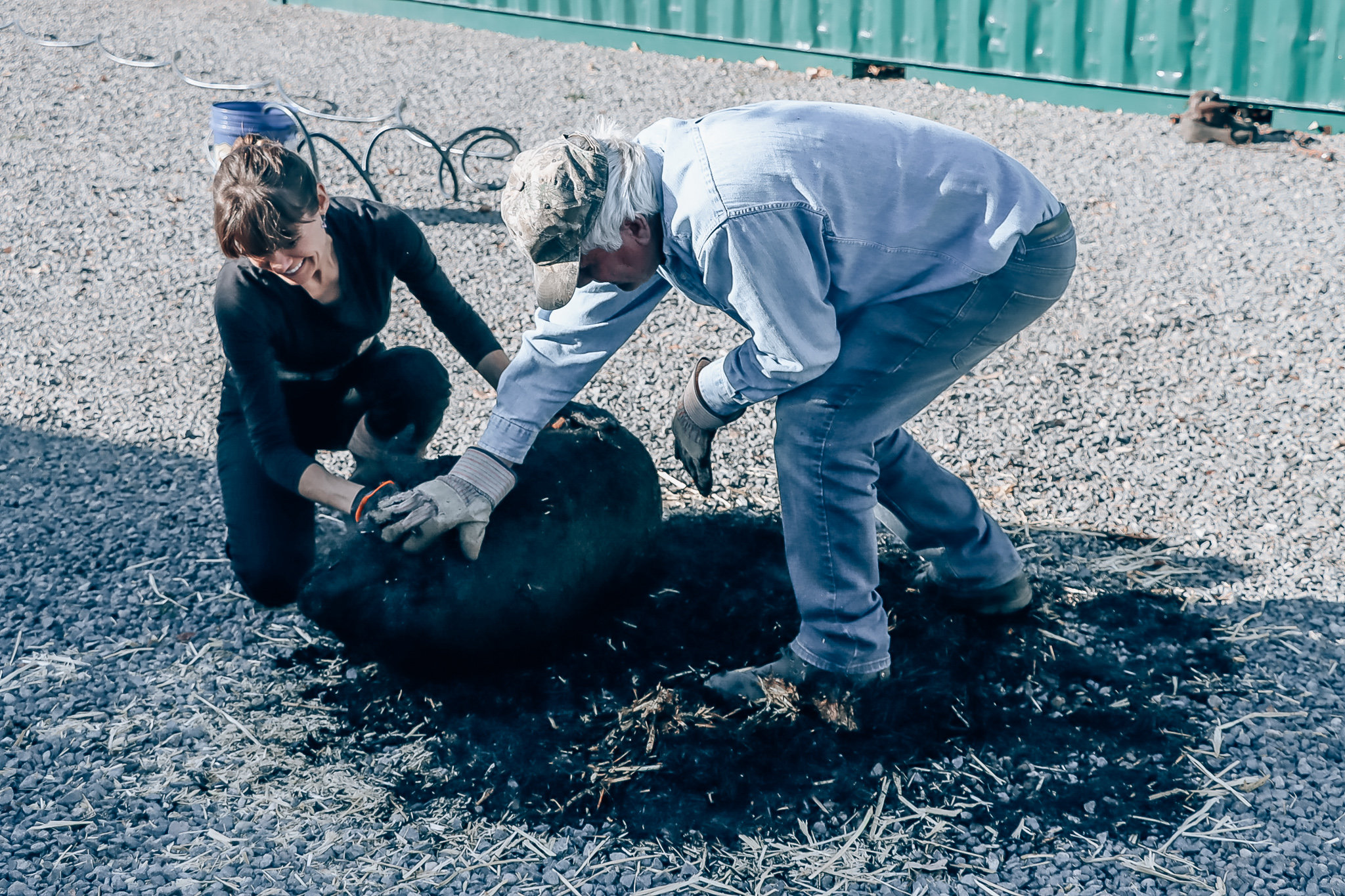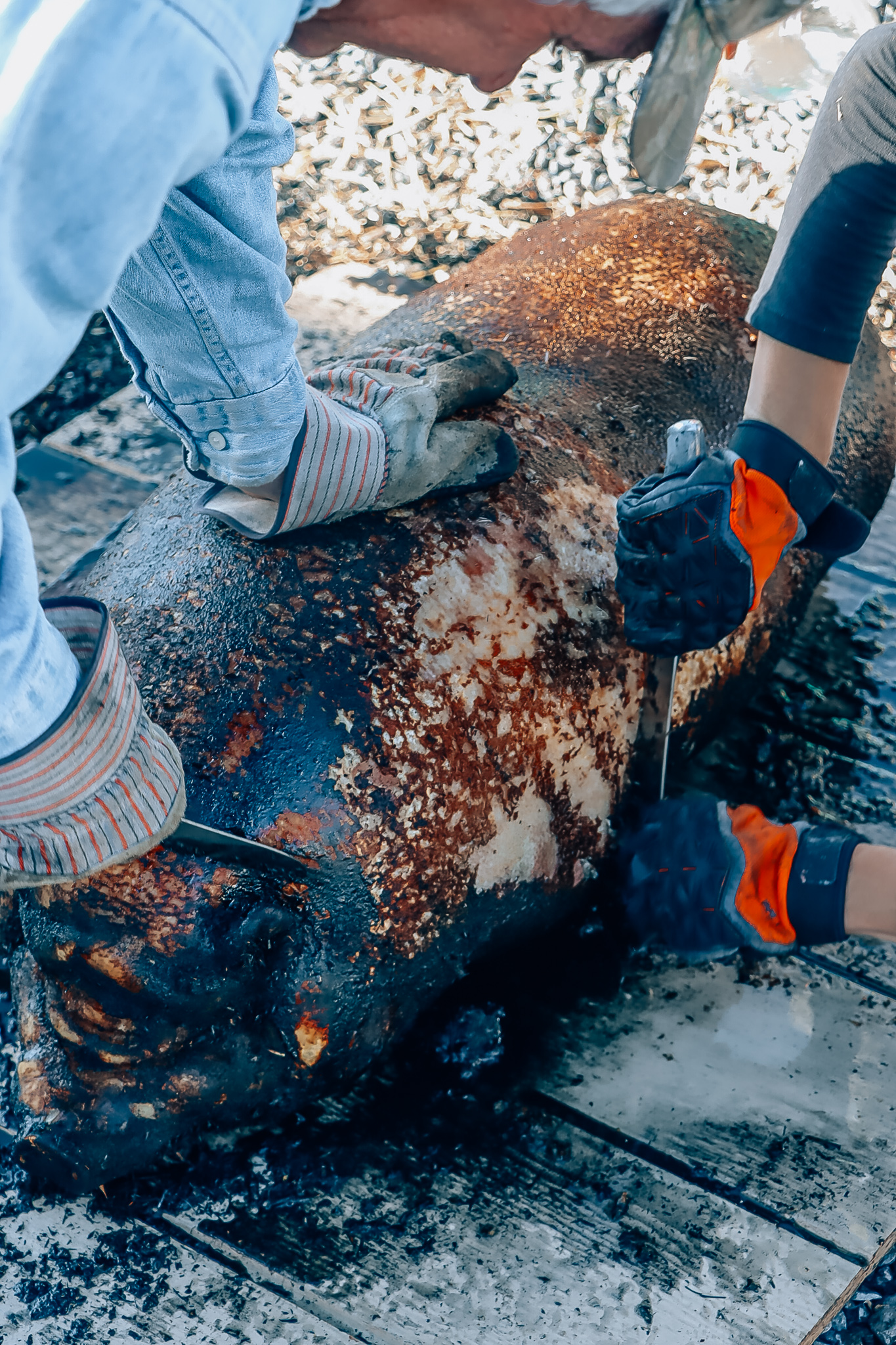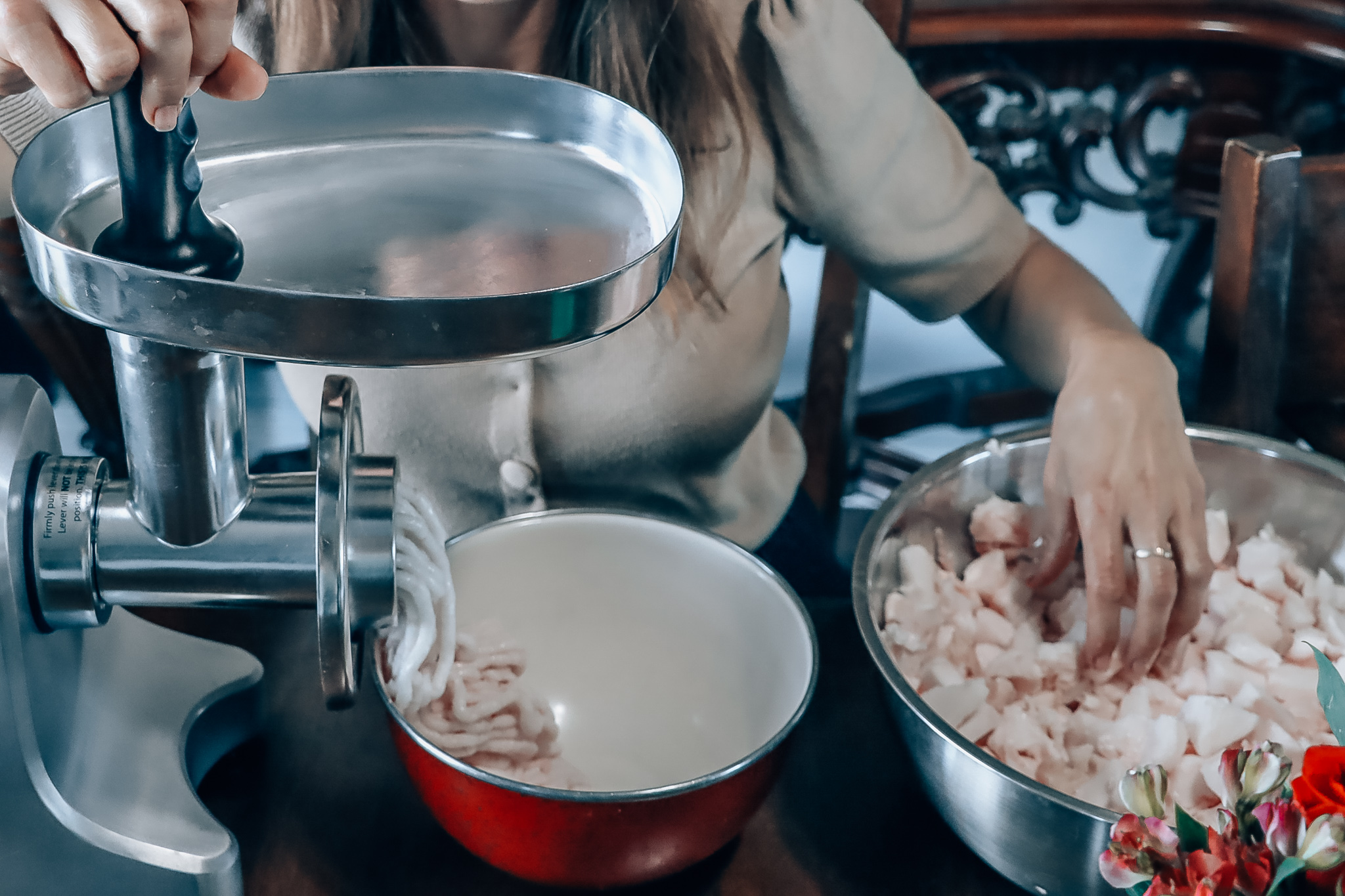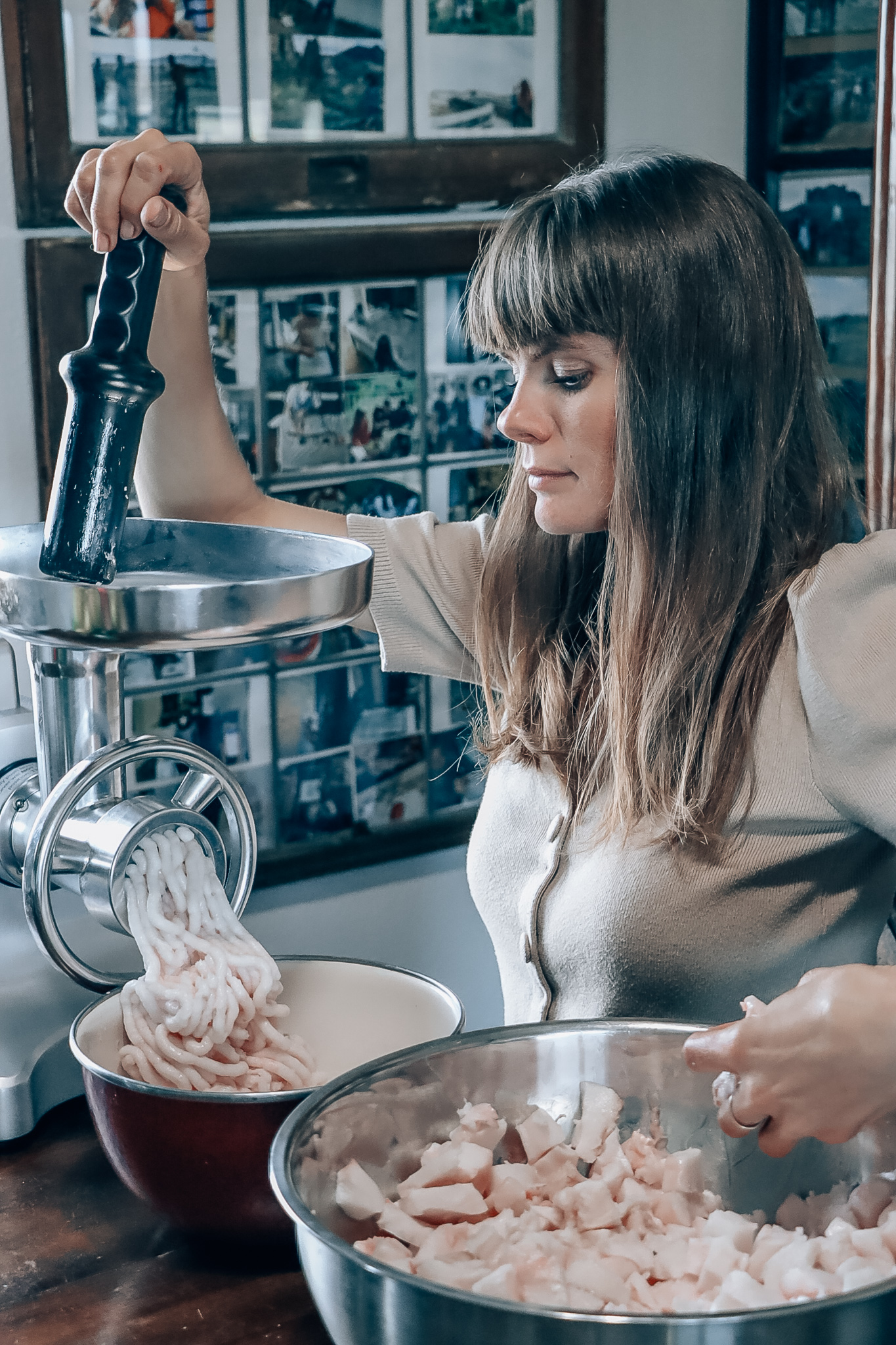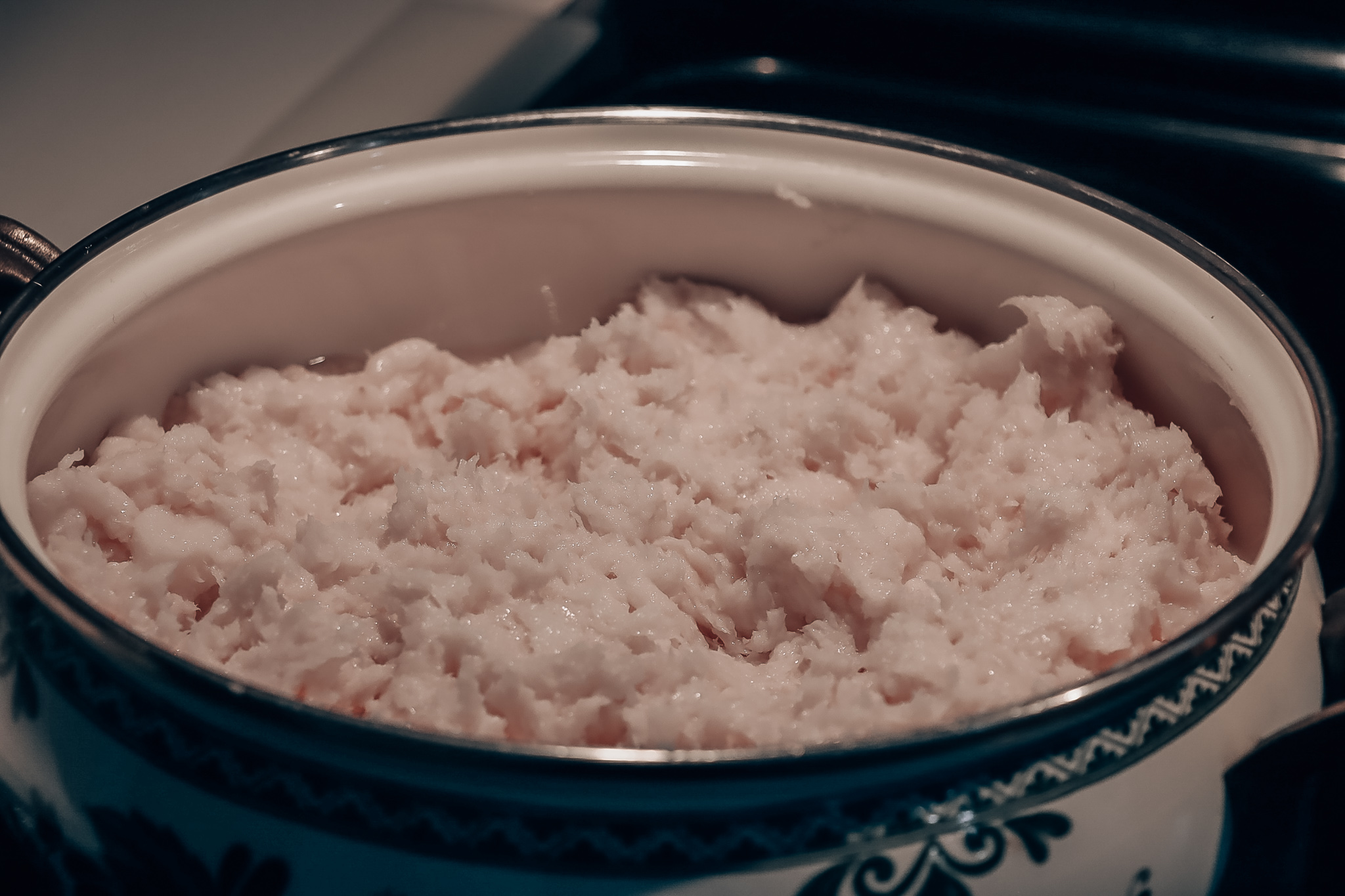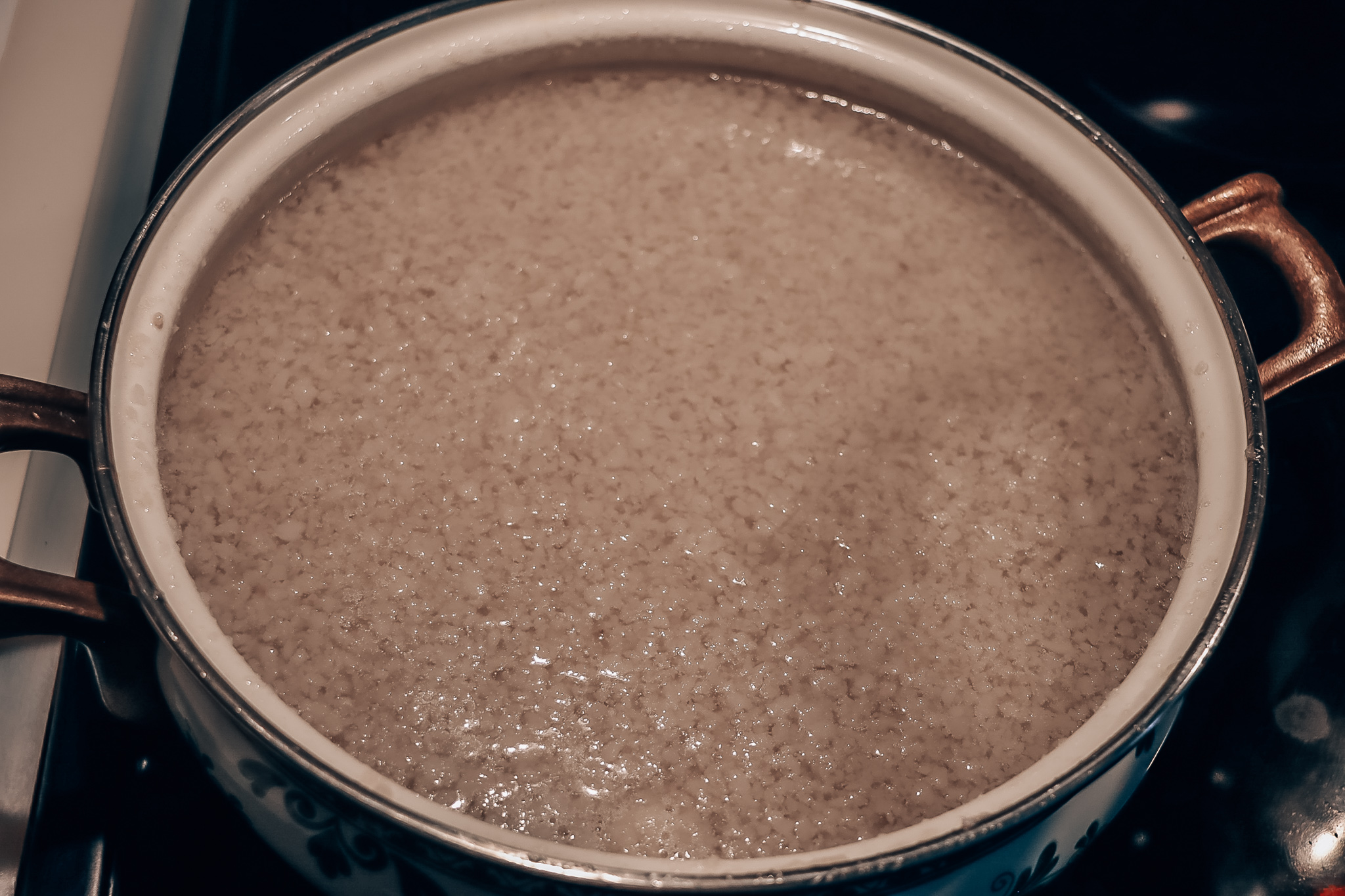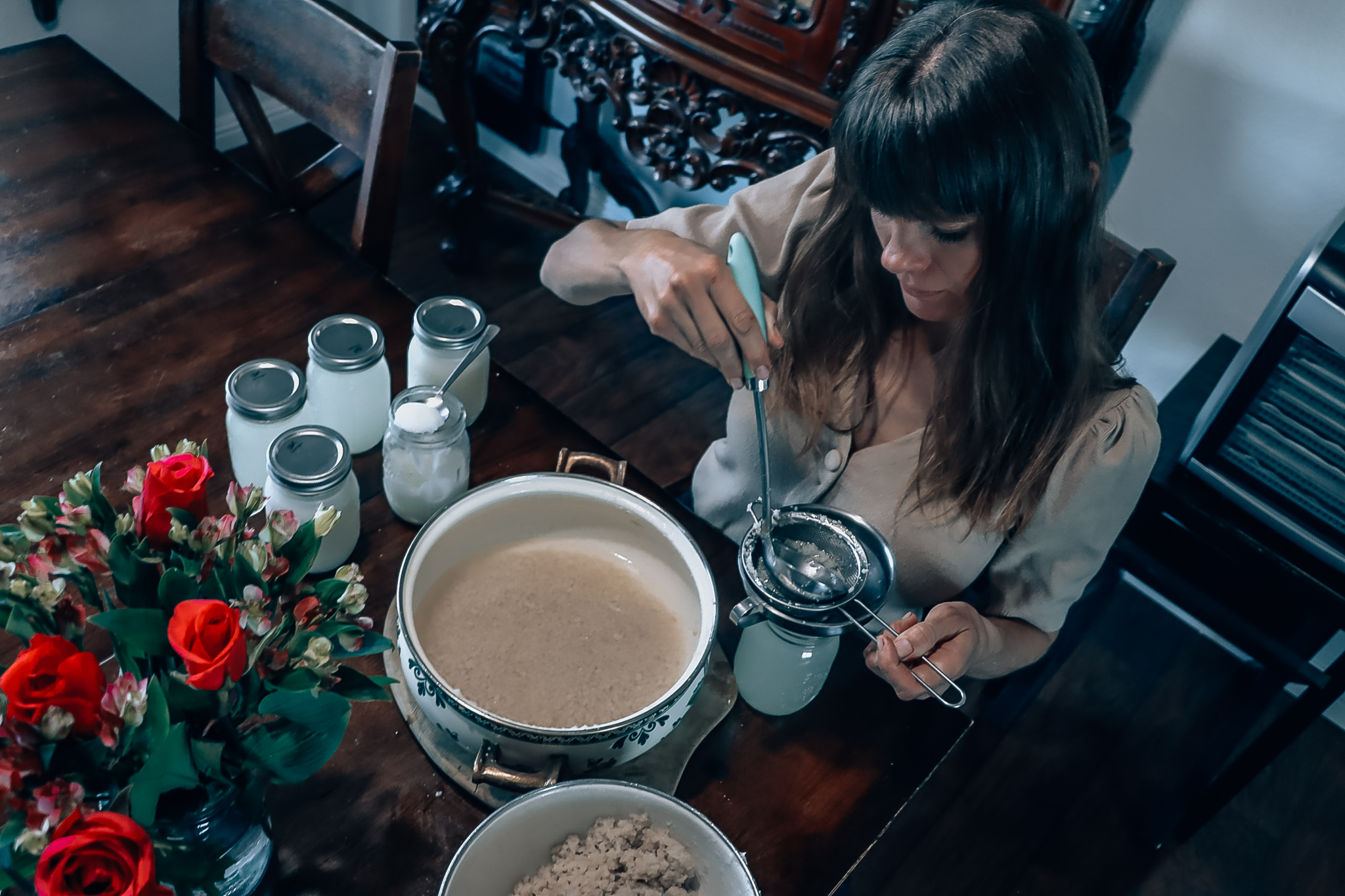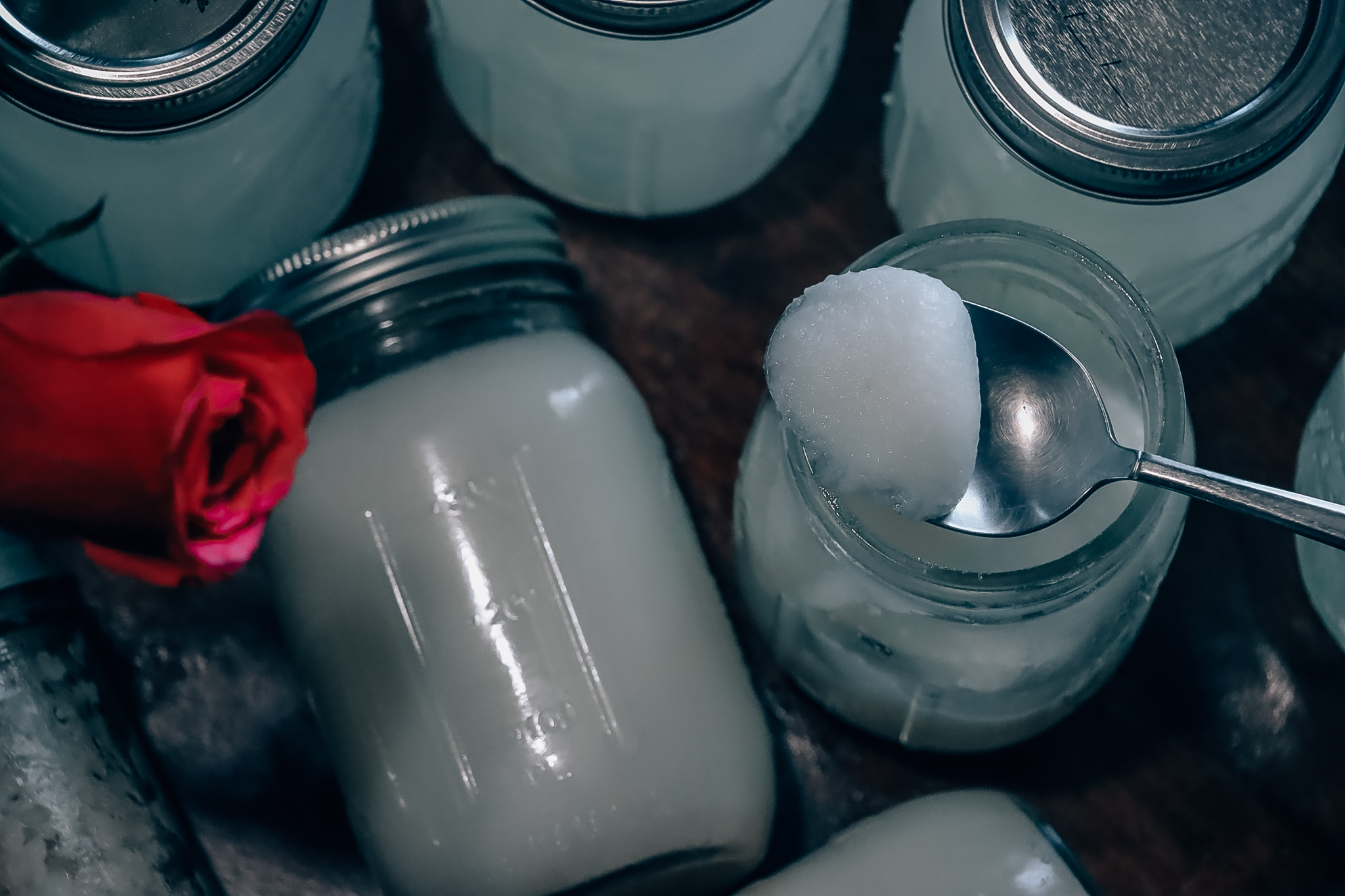Now this pig was mainly made out of fat. He hardly had any meat on him. So, we ended up rendering lots of lard. Each pig has three types of fat: leaf fat (the best lard, it is wrapped around the pig’s kidneys), belly fat, and back fat. You will need a meat grinder. First make sure that the fat is still somewhat cold. It will be easier for you to work with the fat if it is still frozen. Cut the fat into chunks so that the fat can easily go down the grinder. Discard any bloody or unclean pieces. Use a heavy bottom pot and place it on the stove top. You do not need to add anything except for the fat. Do not cover the pot. Your heat should be on the lowest setting. You will want to be near your pot and mix it. You are purifying the lard by heating it. When bubbling will stop or when you see it has mostly turned into liquid then you’re ready to turn the heat off.
You will have cracklings in the pot. The crackling will be soft and a light cream color. Do not throw away the cracklings. You can fry them so they can become crispy and enjoy them. You’ll want your mason jars and lids to be warm. Have a strainer, funnel, and mason jars already to go. You want to put the warm liquid lard into the warm mason jars. When you put the lid on, they will seal themselves. The liquid lard might be a yellow color until it cools. We place our jars of lard in the pantry. You can put them in the fridge if you have room. We use it instead of butter when making biscuits and instead of oil when sauteing meat.
Thank you for reading our blog post.

